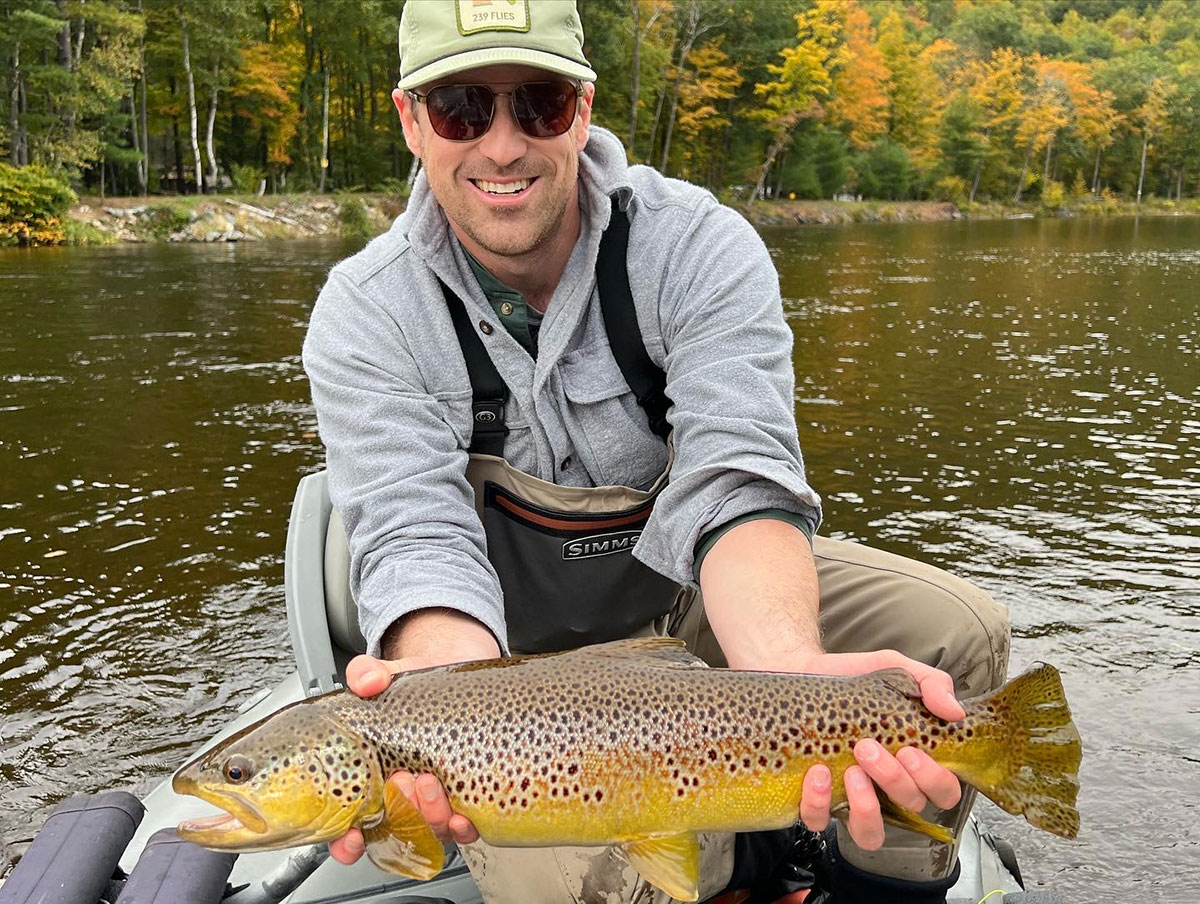Autumn Trout On the Deerfield River
As the hot and humid days of August slowly give way and the first hints of Autumn enter the Deerfield Valley, you can feel a subtle change in the evening air and the first hints of color in the foliage on the hillsides. The stagnant feeling of the end of summer and the tough fishing conditions of August change quickly on the Deerfield-usually ushered in by a cold front in the first couple weeks of September.
Daytime temperatures in the low 70’s and overnight temps in the high 50’s seem to inspire all of God’s creatures to reactivate from the indolence of late summer- birds start to congregate, the first vee-shaped formations geese fly over the valley, and crash land into the large pools of the mainstem. The birds that really catch my eye are the flycatchers that gather along the banks of the Deerfield in the early fall, darting from their perches to intercept hatching insects along with the swallows. If you see them working over the river in large numbers this is a cue to pay attention as an angler-their diet is the same as trout and good insect activity usually correlates to good trout fishing.
The first step in fly selection
Determining what insect is hatching is the first step in fly selection and having both the adult, emerger, nymph or pupae to match up to what your seeing is of critical importance. Be prepared to change tactics while you are fishing. The light Cahill is an important late summer and early fall insect here and the dry fly fishing occurs just before dark-however prospecting with a Cahill nymph or a Hare’s Ear well before hatch time is a solid plan, followed by fishing a Cahill wet fly as you see the first adults emerging. Sometimes this can be more productive than the dry fly fishing that occurs at dusk.
The three most common mayflies
The three most common mayflies you will encounter here in the fall are the Cahills, Isonychia (slate grey drake), and Blue Winged Olives. Be sure to carry all the life phases of these three insects in your box.
The Blue Winged Olive is one of the most reliable fall hatches on the Deerfield starting in mid-September and lasting until the end of October. Technically these are the smaller olives of the baetis family and are different that the larger cornuta olives we see in the spring and early summer. It is important to carry them from a size 18 through 24. My experience fishing them on the Deerfield is that they start out larger in September and get increasingly smaller each week until the hatch ends in late October, with the duns being a tiny size 24 and sometimes 26 (on the Swift River even smaller!). Overcast days are best and a cool overcast day with drizzle can prevent the duns from drying their wings, leaving them trapped on the surface to the delight of resident trout.
Caddis flies reappear in the fall and I always carry some Caddis patterns in my box with both pupae and adult imitations-as you never know when you will encounter a hatch with trout looking for them.
The fall season flying ant hatch
One of the most important “hatches” of the fall season is the flying ant hatch- which technically is not a hatch as the insects wind up in the water after swarming from their colonies-most years this occurs from mid-September through the first week of October on warm afternoons. On the Deerfield we have cinnamon and black flying ants-the cinnamon tend to be larger (size 16-18) than the black ones which range from size 18-22. Flying ant hatches can bring every fish in the river to the surface to gorge on them and not having some of these flies in your box is a heartbreaking mistake.
Here is a list of some of the dry flies I like to have in my box for fall trout fishing on the Deerfield River:
- Light Cahill dry size 14
- Light Cahill wet size 14
- Dun Variant size 12
- Parachute Adams size 12
- Blue Wing Olive dry size 18 through 24
- Blue Winged Olive Usual with trailing shuck size 18-24
- Parachute Adams size 24
- Mole Fly Olive size 18-24
- Cinnamon Flying Ant size 16-18
- Black Flying Ant size 18-22
- X-Caddis Olive size 14-16
- X-Caddis Tan size 18
I hope this list helps you connect with some trout this fall on the Deerfield! It is important to understand that insect diversity increases as you move away from Fife Brook dam and the upper Catch and Release area due to its scouring effect from high velocity water releases. Fishing close to the dam will be more productive with midge patterns, aquatic worms (think San Juan or Squirmy worms), and caddis patterns and terrestrials. As you move down river, you will see more mayfly action and more insect species. If you want to see all the river has to offer book a float trip with me and learn more about the Deerfield River and what flies to use and when to use them-go to chrisjacksonflyfishing.com and book your trip!
